Most flies are OK. Some work well. Some consistently produce, and they’re my Confidence Flies.
My list of such flies does vary over the years; for example, I these days rarely throw a Pheasant’s Tail, Hare’s Ear, Frenchie, or Pat’s Legs. They don’t seem to work as well, and I suspect that is because many anglers throw those patterns.
I also notice that my favorite flies are usually pretty simple to tie. I no longer fish Perdigones, for example, because they take a long time to make and aren’t appreciably better. So, I am mindful of Return on Time.
In 2020, unless I’m throwing big-and-articulated streamers, my go-to flies are below. Most have been in that top-bucket category for a few years and produce quite consistently.
SEXY WALT’S
If I had to fish one fly all year, the Sexy Walt’s would be it. This pattern is extremely productive. Freestones or tailwaters, new stockies or wily Farmington browns, it doesn’t matter.
I think the key is that it is simple, and so, there are fewer details to which a trout can object.
I use black Hare’s Ear dubbing to mimic stoneflies and use tan Hare’s Ear dubbing to portray a Caddis Pupa. My key wrinkle is a “touch dub” technique to make the fly very spiky and trap air bubbles.
You can make them as anchor flies for tightlining, but I also have some unweighted-and-small ones for dropper flies. I make these flies in sizes 8 to 18.
CDC SOFT HACKLE
If I had to pick one dropper fly for nymphing, this would be it.
The CDC fibers create the movement for which savvy trout look. When bugs are starting to emerge, this is a great fly to throw as part of a tandem nymphing set-up or a wet-fly rig.
I’m partial to olive-brown. Sizes 18 to 22 are my sweet spot. Materials list and tying instructions here.
THE ‘MIGHTY MIDGE’
This was my #1 fly last year when I focused on wet flies (materials list here).

The magic ingredient is starling. Sizes 20 and 22 did the most damage.
I’m not sure why, but takes on the swing with this fly have been particularly brutal. My theory is that wily fish are most susceptible to small flies with movement. Plus, I suspect that tiny-and-dark bugs are a big part of a trout’s diet. So, this fly looks safe, and the fish pounce.
LANCE EGAN’S RED DART
This is a classic attractor pattern. It doesn’t look like anything natural but, yet, has a bunch of strike triggers.
And, when its originator is Team USA’s Lance Egan, you want to give the fly at least a second look. Lance competes globally. He knows. (Our interview with him is here, by the way.)
The pattern isn’t tricky, but it does take time to make, as it involves a few steps. Still, I invest the time because the pattern just works, particularly when it is late in the season and the fish have seen everything. They see the Red Dart and don’t know yet that it’s a fly with a hook.
When fish are fussy, a size 16 Red Dart with my Micro-Thin Euronymphing Leader (formula here) usually produces in spades.
Materials list here.
CDC CADDIS EMERGER
I’ve got loads of dry flies in my fly boxes. But, over the past few years, I reach for one of two patterns nearly all of the time. The first is a Caddis Emerger with CDC.
You can add CDC as a wing or as the body. I’m particularly fond of Lance Egan’s Corn-Fed Caddis as a straight-up dry or for the Euro Dry-Dropper. Lance’s instructional video is here.
People think CDC is expensive. In fact, it is quite affordable if you buy the large bags. I really like the dark-grey color.
X-CADDIS
My other go-to dry is the X-Caddis, another emerger (prior posts here and here, the latter of which includes an instructional video).
I like brown Z-lon for the trailing shuck and use either pink or dark-grey CDC for the underwing. Size 20 is money for me.
SYL’S MIDGE
An oldie, but a goodie (materials list here). And, I know very few anglers who throw this pattern, which is a bonus.
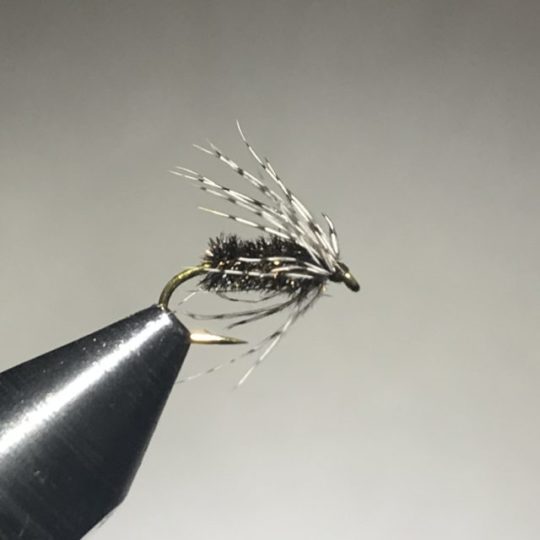
In this era of complex flies, this simple pattern looks too simple to be true. But, it works. I like sizes 16 to 20.
THE RAINBOW WARRIOR AND THE RAINBOW SCUD
Lance Egan’s Rainbow Warrior is a great dropper fly in winter, particularly when unweighted and in a size 20 (materials list here). The key component is rainbow scud dubbing, which is magical.

If you use the material for the body of a small scud, you’ll do well. The Rainbow Scud has killed it for me at the Swift.
Just note that the word is out on it. I’ve crossed paths with a particular angler at the Swift River. On two occasions, after landing good fish on the Rainbow Scud, he asked me what I was throwing. I told him. He later had success with the fly and posted about it on a large Facebook page.
I’m cool with it, as I know that’s the price I pay for sharing flies with people who ask. And, I’m fine with creating my own competition: I just make and test new flies, and I love doing both.
Hope this list helps. Tight lines!
Discover more from BlogFlyFish.com
Subscribe to get the latest posts sent to your email.

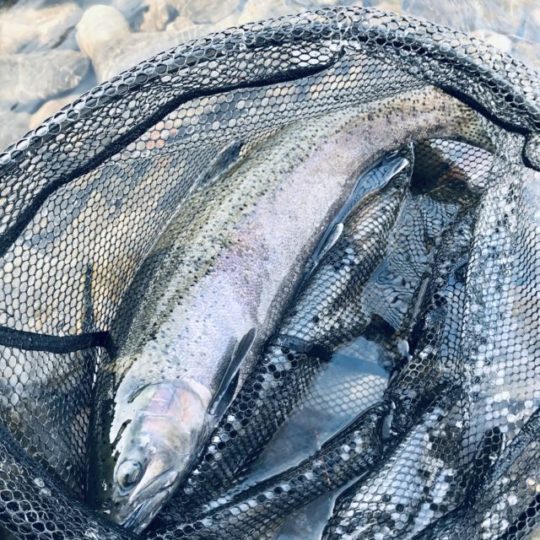
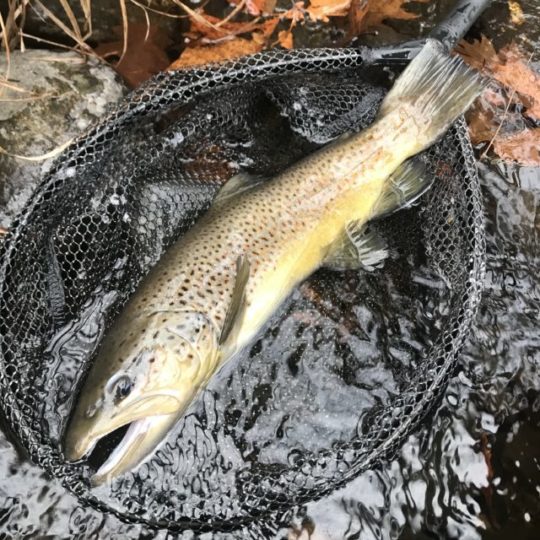



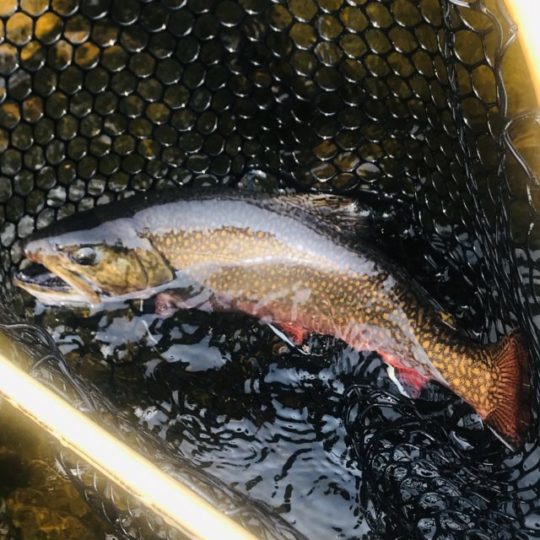
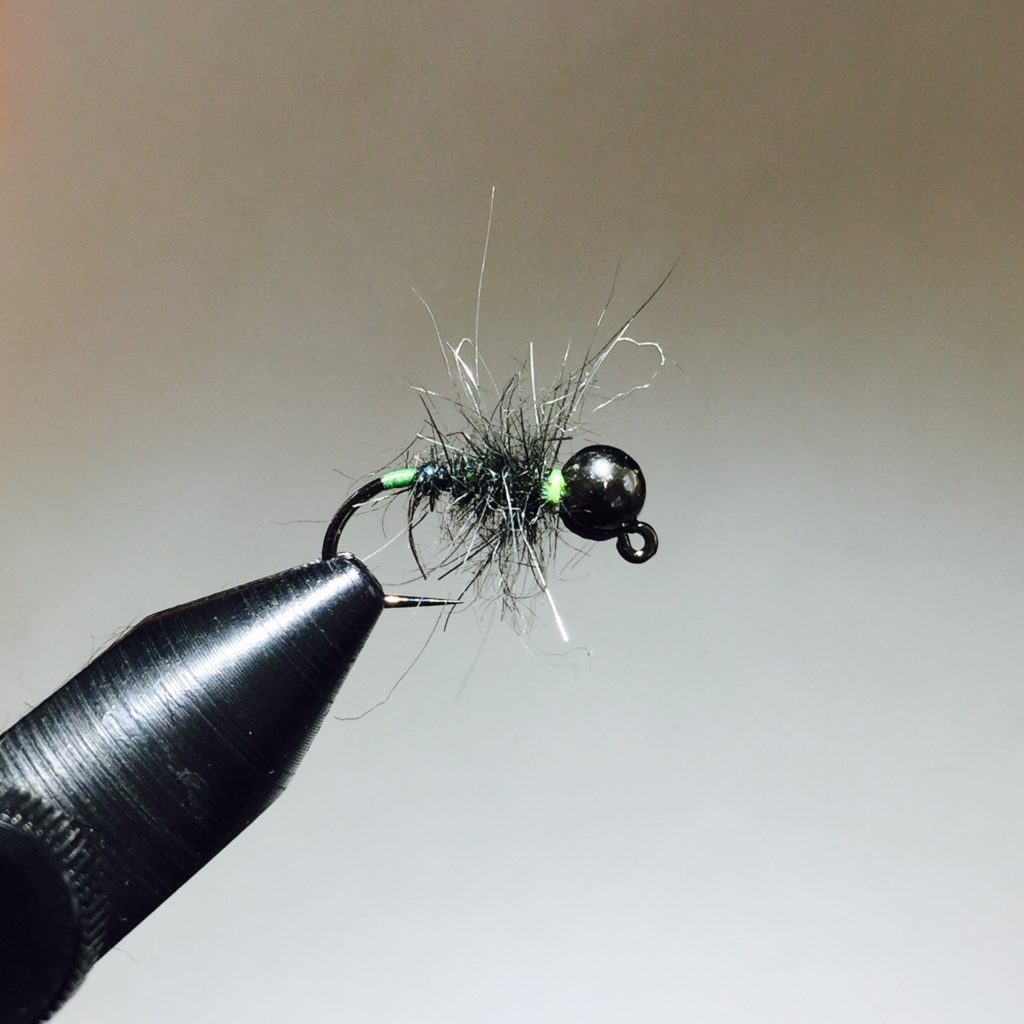
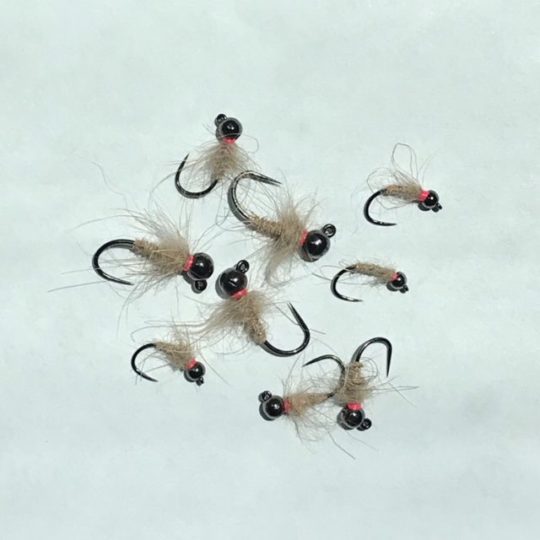
no wonder the fish like your flies. they’re beautiful. thanks for sharing!
Thank you!
Thanks for the timely sharing as it’s time to stock up for 2020! Don’t discount large (#6) wet flys such as Hare’s Ear’s, Invicta’s. You would be surprised the action they get when hatches such as Hendricksons, March Browns are going on. Great searching patterns and I will now add your CDC soft hackle to the top dropper.
Interestingly I have had little success using Walt’s, but a Frenchie is always tied on, and still produces for me.
Size 6? Wow!
Heavy wire, short shank, fish haven’t seen any, what’s not to like!
Here’s an attempt.
Jo, on those small midges, how do you fish those? Dry, sub-surface, split-shot sometimes? Do you dead drift them, swing them downstream, or both?
Thanks,
Sam
Sub-surface while both dead-drifting and swinging and while either tightlining or as part of a wet-fly rig.
I noticed that a majority of your confidence flies are small. I too have had better overall success in recent years (with the exception of the Hendrickson Hatch) using flies (wets, drys, nymphs) in sizes 18-26. I wonder if it is due to fishing pressure on popular rivers such as the Farmington? Bug hatches haven’t changed much over the years but maybe the fish have seen too many larger patterns on a given day and have become a little more selective?
I think you’re right, Steve. And, at tailwaters, there’s a plethora of smaller bugs.
However, I do find that “shock and awe” can work, too (e.g., big streamers). But, for “regular” sized 12″ to 15″ trout that most of us find during the daytime, we’re seeing more bug eaters than fish eaters, IMO.
I said it years ago, and I’ll say it again…..
The fact that you don’t follow me in Twitter is insane….
We have the exact same lives…..take a look…..
@spedmeister
This is not spam ……
Haha! Just fixed that problem.
Hey thanks for this article! I’m wondering if you ever use a drop shot rig, and if so do you think unweighted nymphs are better?
Hey, Jack, thanks so much. I don’t tightline as much these days, but, yes, I do drop-shot at times, after taking George Daniel’s clinic.
Pros: fewer snags and lost flies
Cons: less connection to the anchor fly
On unweighted nymphs, nearly all of my dropper flies are unweighted. I do like how they bounce and move in the current to entice trout, but I have no hard data as to whether they’re more effective as a result.
Cool, makes sense! I’ve just started drop shot nymphing after watching Kelly Galloups video on YouTube. I’ve been fishing the battenkill mostly and caught a few but I think a euro-nymphing or wetfly setup might be better. The main advantage so far is I haven’t lost any flies just as you say haha
Kelly is incredibly experienced. I had the luck to fish the Upper Madison for a week and visited his fly shop a few times. A wealth of knowledge in that guy.
I wanted to thank you for recommending these patterns. I tied the CDC Midge soft hackle and the Mighty Midge based on your specifications. Today on the river I was the only one consistently catching trout. I appreciate your generosity sharing what’s worked for you, and I am excited to tie more of these flies.
Happy to help!